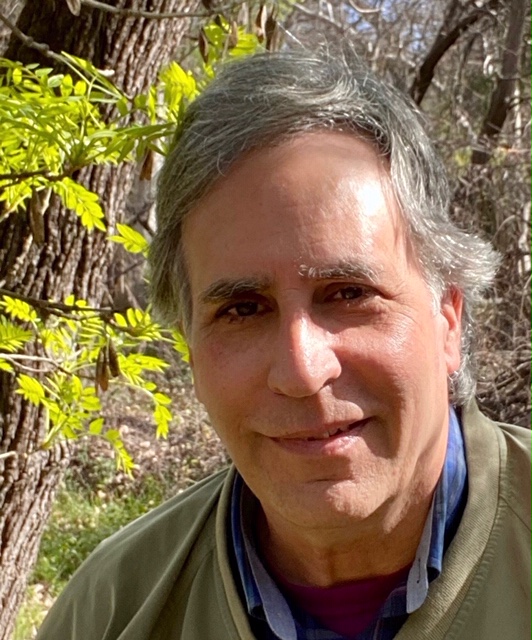California
The Art
of Meditation
It’s the winter solstice in the northern hemisphere. The sun shines brightly, if briefly on this, the shortest day of the year. When one draws near to the earth, the world grows further away. How necessary that has become each day.
Though it's pleasantly warm sitting in direct sunlight, as the sun makes its shallow arc across the azure sky the parkland descends into deepening shadow. Overlooking the swollen stream (California has received a fair amount of rain from the first couple of storms off the Pacific), I watch the copious water flow by.
The park is quiet, and even the occasional vehicle on the adjacent road (now visible through the bare trees) does not disturb the silence. Nearly all of the leaves have fallen, or been stripped from the trees by the storms, but a little greenery and fall color remain. The water rushing by becomes the only sound, enveloping, without exclusion, all noise. Then one ‘hears’ the hush of the ineffable beauty of the earth, and the goodness of life upon the land.
Meditation is a spontaneous combustion that begins when thinking effortlessly ends. Without implying or imparting a method, can one convey what happens when the phenomenon of meditation occurs, so that anyone who wants respite from this disordered, if not insane world may awaken it?
Thinking is one thing, and questioning another. But the undivided observation of everything within and without puts one in another dimension altogether. Making the transition from the noise of the mind to the silence of being is the perennial challenge for serious people working not only to ignite a revolution in their own consciousness (there really is no such thing as 'my consciousness') but the consciousness of humankind. That cannot occur through effort, and making a goal of it, however subtly, precludes the phenomenon of meditation from occurring.
What is the difference, and relationship, between quiet and silence? Quiet is the absence of noise; silence is the basic quality of being. Stillness and quiet are important for experiencing silence of being, but not indispensable. One can even experience the silence of being in the middle of a mall. Indeed, one has to, if one isn’t to drown in the rising tide of mindlessness and numbness.
But how does one get from here to there? Though I still have to keep relearning it, there is no duality as ‘here’ and ‘there;’ there is only here and now. The regenerative source of renewal and insight in silence is always there, like an underground aquifer; but in trying to reach it, it invariably recedes. Right observation negates the noise of content consciousness; then, however briefly, an altogether different kind of consciousness comes into being within one.
I usually still require a period of relative quiet in nature for meditation to catch fire within. It happens with nearly every sitting now, but it still requires some time. (Paradoxically, one has to take time physically to end time psychologically.) If one is aware of emotions, patterns, and attitudes as they arise within one, and make no attempt to escape, avoid, or even explain them, they dissolve, and the mind and heart grow silent.
The philosophical and scientific ideology that perception is inevitably conditioned by experience denies meditation. Recently a well-educated person who works with children actually said to me that each brain perceives the same color, sound, etc. differently. Thereby, absurdly, relativism becomes solipsism. The notion that one cannot directly perceive anything is a vicious circle if ever there was one.
Therefore the first step is to realize that one can see things as they are, whether a tree, or some facet of ‘me.’ Given that basic truth, one remains with whatever it is within one —fear, anger, hate, envy, etc. That is the beginning of true self-knowing, and a non-accumulative kind of learning.
The crucial factor in learning the art of meditation is activating the movement of negation. Again, that is not a function of effort or will. Though intent, as well as taking time and making space are necessary for the phenomenon of meditation to occur, effort and will are antithetical to initiating the involuntary movement of negation, which is the core action of meditation.
We come full circle. To initiate the movement of negation and ignite meditation one has to end the habit of division in observation. There is no separate observer in actuality. The notion ‘I am an individual’ is deeply separative and wrongheaded. It really means ‘I am a dividual,’ since in-dividual literally means ‘not divided.’
When there is undirected awareness of one’s thoughts, emotions, and states, the movement of negation gathers momentum, and meditation ignites. Then one comes into contact with something that can be called sacred.
Martin LeFevre is a contemplative, and non-academic religious and political philosopher. He has been publishing in North America, Latin America, Africa, and Europe (and now New Zealand) for 20 years. Email: martinlefevre@sbcglobal.net.
The author welcomes comments.
ENDS



 Binoy Kampmark: Condemning The Right To Self-Defence - Iran’s Retaliation And Israel’s Privilege
Binoy Kampmark: Condemning The Right To Self-Defence - Iran’s Retaliation And Israel’s Privilege Gordon Campbell: On The Making Of King Donald
Gordon Campbell: On The Making Of King Donald Binoy Kampmark: Rogue States And Thought Crimes - Israel Strikes Iran
Binoy Kampmark: Rogue States And Thought Crimes - Israel Strikes Iran Eugene Doyle: The West’s War On Iran
Eugene Doyle: The West’s War On Iran Richard S. Ehrlich: Deadly Border Feud Between Thailand & Cambodia
Richard S. Ehrlich: Deadly Border Feud Between Thailand & Cambodia Gordon Campbell: On Free Speech And Anti-Semitism
Gordon Campbell: On Free Speech And Anti-Semitism